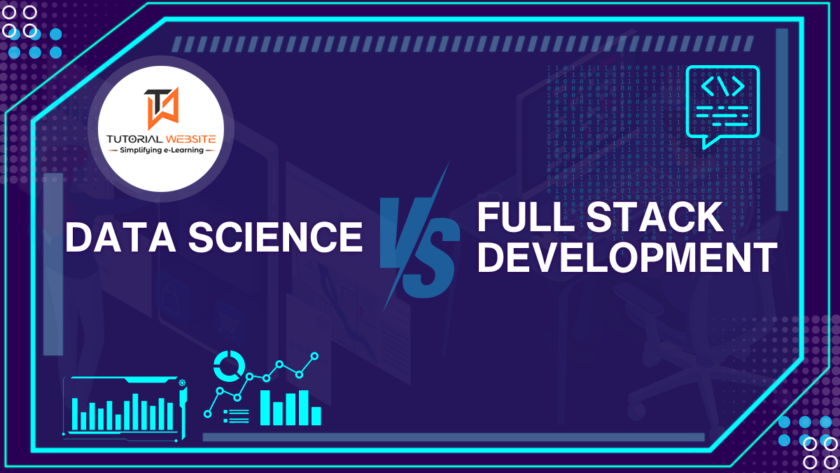10) Explain controller in CodeIgniter.
In CodeIgniter, a controller is a PHP class that handles the user’s requests and controls the flow of data in a web application. It acts as an intermediary between the models (data layer) and the views (presentation layer) in the Model-View-Controller (MVC) architectural pattern. The primary responsibility of a controller is to process the user’s input, retrieve data from models, and pass that data to the views for presentation.
11) What is default controller in CodeIgniter.
In CodeIgniter, the default controller is the controller that gets executed when a user accesses the application’s root URL or the URL without specifying any specific controller or method. In other words, the default controller is the entry point of the application.
12) How will you call a constructor in CodeIgniter?
In CodeIgniter, calling a constructor in a controller is done automatically when the controller class is instantiated. The constructor is a special method that gets executed automatically when a new instance of the controller is created, typically when a user accesses a specific URL that maps to that controller.
To define a constructor in a CodeIgniter controller, you use the __construct() method and call parent::__construct();
13) Explain what helpers in CodeIgniter are and how you can load a helper file?
In CodeIgniter, helpers are utility files that contain functions that are commonly used throughout the application. Helpers provide a way to add reusable code snippets or functions that don’t fit into the Model-View-Controller (MVC) architecture. They assist in tasks such as URL manipulation, form handling, text formatting, file operations, and more.
To load a helper file in CodeIgniter, you use the $this->load->helper() method in the controller or a view. The helper file should be placed in the “application/helpers” directory.
14) Explain routing in Codeigniter?
In CodeIgniter, routing refers to the process of defining how the application’s URLs are mapped to specific controllers and methods. It allows you to customize the URL structure of your web application, making URLs more user-friendly and search engine optimized.
Routing is particularly useful for creating clean and meaningful URLs that are easy for users to understand and remember.
15) What is basic CodeIgniter URL structure?
The basic URL structure in CodeIgniter follows the segment-based approach, where each segment of the URL after the base URL represents a component of the application. The basic CodeIgniter URL structure is as follows:
|
|
http://example.com/index.php/controller/method/param1/param2 |
Let’s break down each part of the URL:
http://example.com/: This is the base URL of your CodeIgniter application. It is the address of your web application and represents the entry point to your application.index.php: By default, CodeIgniter URLs contain “index.php” as a part of the URL. However, it is possible to remove “index.php” from the URL by enabling “mod_rewrite” (Apache server) or configuring URL rewriting (for other web servers) and setting the “index_page” parameter to an empty string in the “config.php” file.controller: This segment represents the name of the controller class that will be invoked to handle the request. Controllers are responsible for processing user requests, handling application logic, and communicating with models and views.method: This segment represents the name of the method (function) within the controller class that will be called to perform the specific action requested by the user. The controller method should be public and accessible to be invoked.param1, param2, etc.: These segments represent additional parameters that can be passed to the controller method. Parameters are optional and can be used to pass dynamic values to the controller method.
16) What is inhibitor in CodeIgniter?
In CodeIgniter, an “Inhibitor” serves as an error handler class that leverages native PHP functions such as set_exception_handler, set_error_handler, and register_shutdown_function to effectively manage parse errors, exceptions, and fatal errors. With its error handling capabilities, the “Inhibitor” provides a robust mechanism to catch and address various types of errors that may arise during the execution of a CodeIgniter application.
17) Why is there a need to configure the URL routes?
Configuring URL routes in CodeIgniter is essential for several reasons:
- SEO-friendly URLs: Properly configured routes allow you to create clean and SEO-friendly URLs for your web application. Search engines and users prefer URLs that are meaningful and descriptive, making it easier to understand the content of the page without relying solely on query parameters.
- User Experience: Clean URLs improve the overall user experience. Users can easily remember and share URLs that are concise and meaningful, leading to increased user engagement and return visits.
- Hide Implementation Details: Routes help in decoupling the URL structure from the actual controller and method names. It allows you to change the internal structure of your application without affecting the URLs exposed to users or external systems.
- Consistency: Using routes, you can enforce a consistent URL pattern across your application, making it more organized and easier to maintain.
- Shortened URLs: Routes can be used to create shortened URLs for specific pages or resources, making them more shareable on social media platforms or other communication channels.
- Friendly Error Messages: Custom routes can also be used to display user-friendly error messages when a page or resource is not found, improving the overall user experience.
- Handle Legacy URLs: If you are migrating from an older version of the application or another framework, routes can help you redirect legacy URLs to their corresponding new URLs, ensuring a smooth transition for existing users and maintaining SEO ranking.
- Security: Using custom routes, you can hide sensitive information from URLs, making it harder for potential attackers to guess your application’s internal structure.
- URL Consistency Across Different Environments: Routes can be used to adapt your application’s URLs to different environments (e.g., development, staging, production) without changing the actual codebase.
By configuring URL routes in CodeIgniter, you gain more control over how your application’s URLs are structured and presented to users and search engines. This flexibility allows you to create a more user-friendly and SEO-friendly web application, while also enabling you to manage URLs more efficiently during application development and maintenance.
18) List out different types of hook point in Codeigniter?
In CodeIgniter, hooks provide a way to modify the behavior of the core system by allowing you to insert custom code at specific points during the application’s execution. The following are the different types of hook points available in CodeIgniter:
- Pre-system
- Pre-controller
- Post-controller-constructor
- Post-controller
- Display Override
- Cache
- Post-system
19) What is the default method name in CodeIgniter?
In CodeIgniter, the default method name is typically “index.” When a user accesses a controller without specifying a method in the URL, CodeIgniter will automatically call the “index” method by default.
20) Explain how you can link images/CSS/JavaScript from a view in CodeIgniter?
In CodeIgniter, you can link images, CSS, and JavaScript files from a view using the base_url() function and the link_tag() function provided by the URL Helper and HTML Helper, respectively. Here’s how you can do it:
Link CSS and JavaScript Files:
echo link_tag(‘path/to/your/css/file.css’);
echo link_tag(‘path/to/your/js/file.js’);
Link Images:
$image_url = base_url(‘path/to/your/image.png’);
echo “<img src=’{$image_url}‘ alt=’My Image’>”;
21) Explain remapping method calls in CodeIgniter.
In CodeIgniter, remapping method calls is an advanced feature that allows you to customize the way method calls are routed within a controller. By default, when a user accesses a controller, CodeIgniter will call the corresponding method based on the URL segment that follows the controller’s name. However, with remapping, you can intercept the method call and decide which method should be executed based on the URL segments.
To remap method calls in a CodeIgniter controller, you need to define a special method called _remap() within the controller class. The _remap() method will be automatically called by CodeIgniter instead of the regular controller method based on the URL segments.
Here’s how to use the _remap() method:
22) Explain how you can extend the class in Codeigniter?
To extend a class in CodeIgniter, follow these steps:
Class MY_Input extends CI_Input {
}
23) Explain how you can prevent CodeIgniter from CSRF?
To prevent Cross-Site Request Forgery (CSRF) attacks in CodeIgniter, you can use built-in security features provided by the framework. CSRF attacks occur when a malicious website tricks a user’s browser into making unintended requests to another website where the user is authenticated, potentially leading to unauthorized actions.
CodeIgniter provides a CSRF protection mechanism that involves generating and verifying a CSRF token for each form submitted by the user. Here’s how you can enable and utilize CSRF protection in CodeIgniter:
$config[‘csrf_protection’] = TRUE;
- 2.Generate CSRF Token in Forms:-
<?php echo csrf_field(); ?>
- Verify CSRF Token in Controllers:-
if ($this->input->csrf_verify() === FALSE) {
show_error(‘CSRF Token Verification Failed’);
}
24) How to access the config variable in codeigniter?
|
|
$this->config->item('variable name'); |
25) How to unset session in codeigniter?
|
|
$this->session->unsetuserdata('somename'); |
26) How do you get last insert id in codeigniter?
|
|
$this->db->insertid(); |
27) How to print SQL statement in codeigniter model??
|
|
$this->db->lastquery(); |
28) Explain Codeigniter File Structure.
When you download Codeigniter you will see the following folder structure :-
- application
- cache
- Config
- Controllers
- core
- errors
- helpers
- hooks
- language
- libraries
- logs
- models
- thirdparty
- views
- system
- core
- database
- fonts
- helpers
- language
- libraries
29) What is the goal of CodeIgniter?
The goal is to enable you to develop projects with much faster than you could if you were writing code from scratch by providing a rich set of libraries for commonly needed tasks as well as a simple interface and logical structure to access these libraries.
30) Explain MVC in CodeIgniter.
Model–View–Controller (MVC) is an architecture that separates the representation of information from the user’s interaction with it.
Controller: The Controller serves as an intermediary between the Model, the View. controller mediates input, converting it to commands for the model or view.
Model: The Model represents your data structures. Typically your model classes will contain functions that help you retrieve, insert, and update information in your database.The model consists of application data and business rules.
View: The View is the information that is being presented to a user. A View will normally be a web page. A view can be any output representation of data.
31) Why is there a need to configure the URL routes?
Changing the URL routes has some benefits like:
- From SEO point of view, to make URL SEO friendly and get more user visits.
- Hide some URL element such as a function name, controller name, etc. from the users for security reasons.
- Provide different functionality to particular parts of a system.
32) Mention what are the security parameter for XSS in CodeIgniter?
CodeIgniter has got a cross-site scripting hack prevention filter. This filter either runs automatically or you can run it as per item basis, to filter all POST and COOKIE data that come across. The XSS filter will target the commonly used methods to trigger JavaScript or other types of code that attempt to hijack cookies or other malicious activity. If it detects any suspicious thing or anything disallowed is encountered, it will convert the data to character entities.
33) How you will use or add CodeIgniter libraries?
All of the available libraries are located in your system/libraries folder. In most cases, to use one of these classes involves initializing it within a controller using the following initialization function:
|
|
$this->load->library('Your class name'); |
34) How you will work with error handling in codeigniter?
CodeIgniter lets you build error reporting into your applications using the functions:-
1. show_error():- This function will display the error message supplied to it using template application/errors/error_general.php.
2. show_404() :- Function will display the 404 error message.
3. log_message(‘level’, ‘message’) :- This function lets you write messages to your log files. You must supply one of three “levels” in the first parameter, indicating what type of message it is (debug, error, info), with the message itself in the second parameter.
35) In Which language CodeIgniter is written?
PHP
36) What are the features of codeigniter? Open source framework
- Light Weight
- CodeIgniter is Extensible
- Full Featured database classes
37) How to unset session in codeigniter?
We can use unsetuserdata to destroy particular session variable
this->session->unset_userdata(‘somename’);
We can use sessdestroy to destroy all session:
$this->session->sess_destroy();
38) How to get random records in mysql using codeigniter?
We can use this:
$this->db->order_by(‘id’,’RANDOM’);
39) Explain Application Flow Chart in codeigniter?
The following graphic illustrates how data flows throughout the system:
CodeIgniter application flow
The index.php serves as the front controller, initializing the base resources needed to run CodeIgniter.
The Router examines the HTTP request to determine what should be done with it.
If a cache file exists, it is sent directly to the browser, bypassing the normal system execution.
Security. Before the application controller is loaded, the HTTP request and any user submitted data is filtered for security.
The Controller loads the model, core libraries, helpers, and any other resources needed to process the specific request.
The finalized View is rendered then sent to the web browser to be seen. If caching is enabled, the view is cached first so that on subsequent requests it can be served.
40) How do you set default timezone in codeigniter?
We can do by adding date_default_timezone_set(‘America/LosAngeles’); in index.php
41) Who developed codeigniter?
Codeigniter was developed bt ellislab Inc.
42) Why codeigniter is called as loosely based mvc framework?
Reason behind this is we does not need to follow strict mvc pattern while creating application.We can also able to build with model only view and controllers are enough to built a application.
43) How do I do a COUNT(‘foo’) using the Active Record functions?
You need to use the SQL AS feature, where you assign a new name to a piece of data. For example: $this->db->select(“COUNT(‘foo’) AS foo_count”, FALSE);// Run your query, and then use the
44) Can I cache only certain parts of a page?
This is related to the question above about nested templates and partials. Basically, CI cache library (1.5.4) only supports full page caching – it’s all or nothing. There are several
45) Is there a way to cycle $this->input->post() items?
There are no CodeIgniter functions to do this, but you can accomplish this easily with a construct such as this one. The result of this function is a $safe_post_array that contains all posted data.





